The History of the Cunard Line from 1947
RMS Caronia (1947)
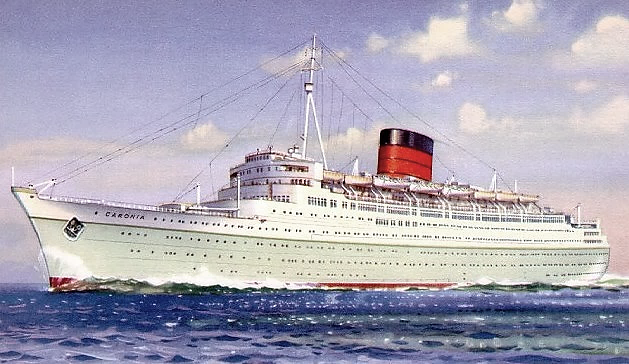
The Caronia was built by John Brown & Co, under yard number 634 for Cunard. Her keel was laid on 13 February 1946 and she was launched on 30 October 1947 by HRH Princess Elizabeth (now Queen Elizabeth II). The Caronia was completed by December 1948 and sailed on her maiden voyage on 4 January 1949. She began her career as a cruise liner. The liner was 714.9 feet long with a beam of 91.21 feet and had a gross tonnage of 34,183 when she was built. The Caronia could carry 932 passengers. Her hull was painted in three shades of green which earned her the nickname “Green Goddess.”
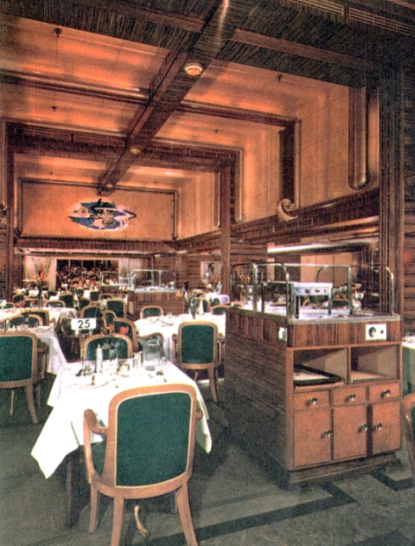

In 1968, the Caronia was sold to the Star Shipping Co, Panama, to relieve some of the financial problems which were being encountered by Cunard. The Caronia was renamed Columbia and once in the hands of Universal Cruise Lines, renamed Caribia.
On her second cruise under the ownership of Universal Cruise Lines, as the Caribia, an explosion in the engine room caused the death of one of the crew and the incident ended her commercial career.
In 1974, she was sold to ship breakers in Taiwan for $3 million and towed by the German tug vessel, Hamburg. Along the way, the two ships encountered a severe gale which threatened the voyage. Unfortunately, the engines of the Hamburg failed and in order to save the vessel, the Caribia was cut lose and hit Apra Harbour's wall.
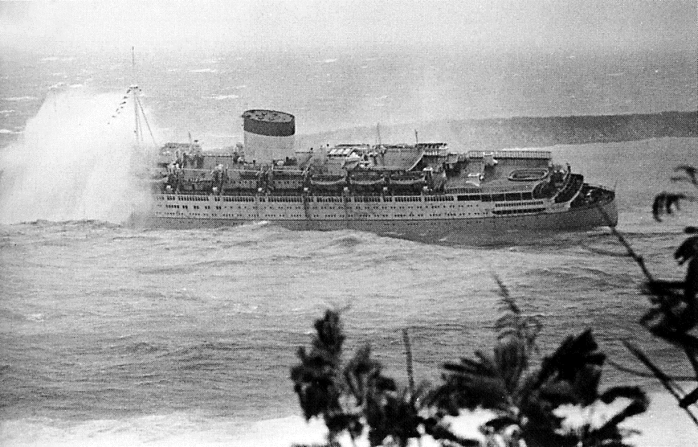
The Cunard Line Post 1950
The 1950s was a period of boom for all the Atlantic lines until the rise in jet engine air travel which challenged the shipping lines into rethinking the functionality of the passenger ship. Ships took on a dual-purpose: to meet the demands of a seasonal trade, and of cruising at other times. So rapid were the technological advances of the late 1950s that the need for what might be described as a “scheduled service” ship disappeared.
Cunard’s Q.3 project was abandoned because the sheer size of the ship would render it impractical. Q.3 was an extension of the Queens and would have been a forerunner to the Queen Elizabeth 2 (QE2). She would have carried more passengers and had a speed of 30 knots.
Technological change in the decade between 1950 and 1960 dwarfed what had been achieved between 1920 and 1940. Designs which began to evolve on Cunard draw¬ing boards were entirely different from the Queens reflecting what designers learned from the Carmania (formerly the Saxonia (no 2) until 1963) and Franconia (no 3) (formally the Ivernia until 1962) as Cunard moved with the times. The Queens were replaced by the QE2 in 1969.
The Saxonia Class
The “Saxonia class” of Cunarder consisted of the Saxonia, the Ivernia, the Carinthia and the Sylvania.
The Saxonia was built by John Brown & Co, under yard number 692. She was launched on 17 February 1954 by Lady Churchill and completed by August 1954. The Saxonia was 608 feet long with a beam of 80 feet and had a gross tonnage of 21,637. She was a twin screw steamer. The ship could carry 925 passengers: 125 First Class and 800 Tourist Class. The Saxonia was the first of four new Cunarders built for the Liverpool to Canada Service. She commenced her maiden voyage on 2 September 1954. Her cargo carrying facility proved unworkable and so she had a major refit and converted into a cruise liner. Her hull was painted light green and she was renamed Carmania (II) in 1963.
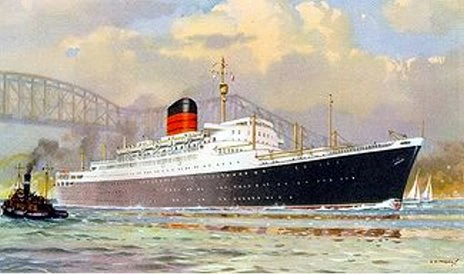
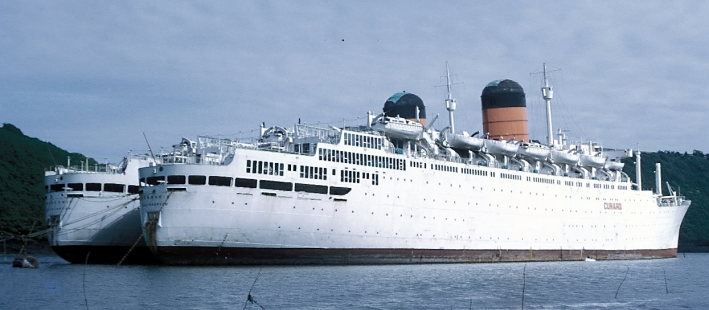
Following her refit, she continued transatlantic crossings and cruises until September 1967. She was painted white at the end of 1966 and became a full time cruise ship until 31 October 1971 when purchased by the Soviet Union-based Black Sea Shipping Company and renamed SS Leonid Sobinov. She was sold for scrap to Alang, India, in 1999.
The Ivernia was the sister ship to Saxonia and built in 1955 by John Brown & Co, under yard number 693. Her keel was laid in December 1951 and launched on 14 December 1954. She was completed in 1955. The Invernia was 608.3 feet long with a beam of 80.4 feet and had a gross tonnage of 21,717. She was a twin screw steamer.
The liner could carry 844 passengers: 113 First Class and 731 Tourist Class. She was one of the “Saxonia class” Cunarders built for the Liverpool to Canada Service.
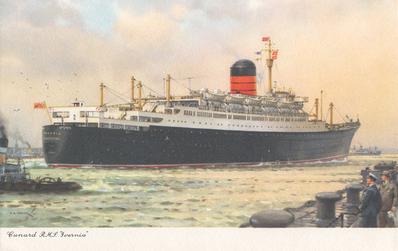
Her maiden voyage commenced on 1 July 1955 from Greenock to Québec and Montréal. After her first voyage sailings would be from Liverpool.
In 1962, she underwent a major refit and was converted into a cruiser, like her sister Saxonia. Her name was changed to Franconia3.
She serviced the UK and Canada routes during the summer and cruised the Mediterranean and Caribbean seas during winter months until 1967 when she was withdrawn from transatlantic passenger service. The Franconia underwent another refit and was painted white. She became a permanent cruiser servicing the Caribbean and the Atlantic Isles and North Africa.
After Cunard were bought out by the Trafalgar House Public Limited Company in 1971, the Franconia was sold to the Far Eastern Shipping Company and serviced the Australian and the Far Eastern routes. She was renamed SS Fedor Shalyapin.
She changed hands several times until being sold for scrap to Alang, India in 2004.
